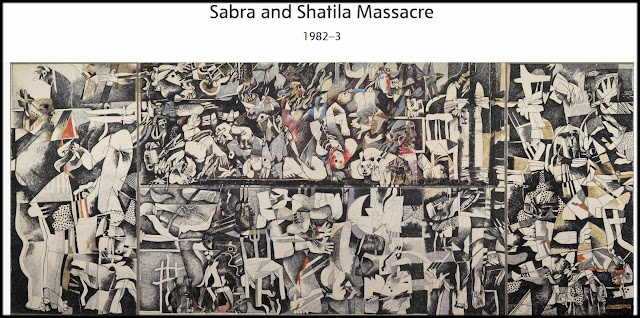The Night that Arik Sharon and the Zionists set the fascist wolves onto Palestinian women and children
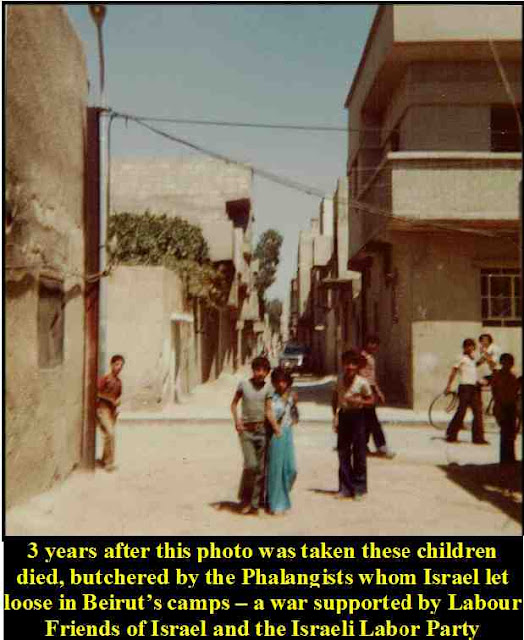
Perhaps the most haunting memory I have concerns the visit I made to Lebanon in the summer of 1979 at the invitation of the PLO. We were refused visas by the London Embassy of Lebanon and instead had to travel via Syria across the land border. I was on a delegation from the British Anti-Zionist Organisation.
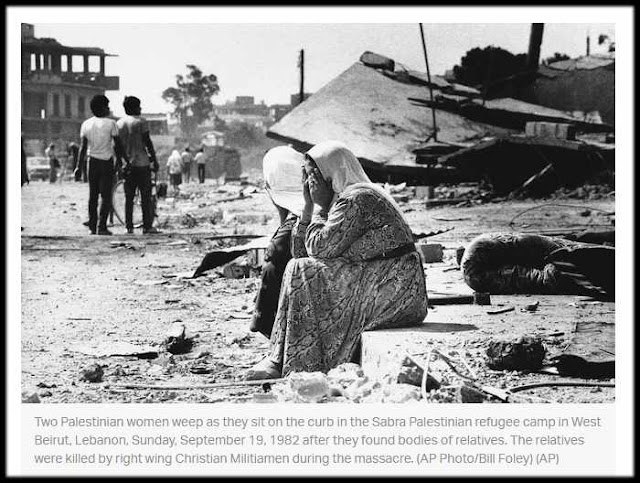
At that time Lebanon was still in the throes of a civil war. In June 1976, with the United States and Israel having given the green light, Syria invaded Lebanon in order to ensure that the Phalangists and their Maronite allies weren’t defeated by the combined forces of the left in the Lebanese National Movement, which the PLO supported, somewhat reluctantly at first.
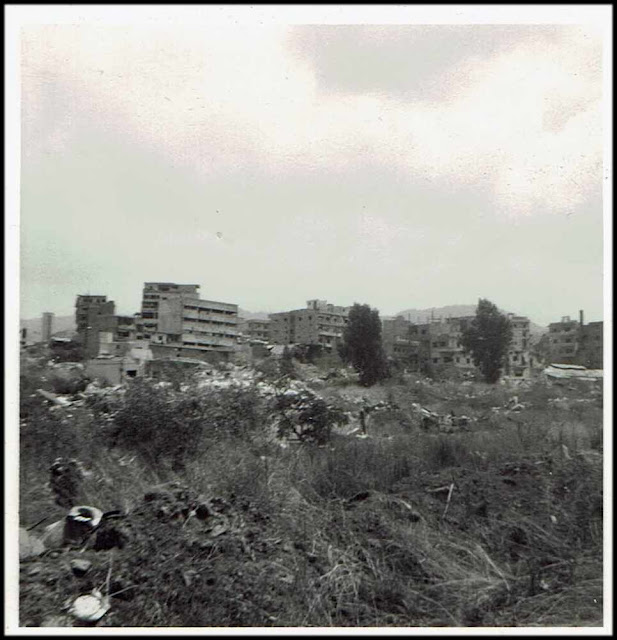
The remains of Tel al-Zataar refugee camp which was destroyed, along with its inhabitants in 1982 after the Phalange besieged it, with the support of Syrias Baathist government
There are still some fools who have illusions in the Syrian Ba’ath Government. But when the Palestinians and their allies were on the brink of power in Lebanon Syria, with the full blessing of Saudi Arabia and the Arab League, invaded Lebanon to prevent their triumph.
In 1979 there was a vacuum in Lebanon. No group held power. The leftists, Druze, Palestinian, Shi’ite and Murabitoun, the Sunni Nasserist militias held power in West Beirut. The Phalange and Christians occupied East Beirut.
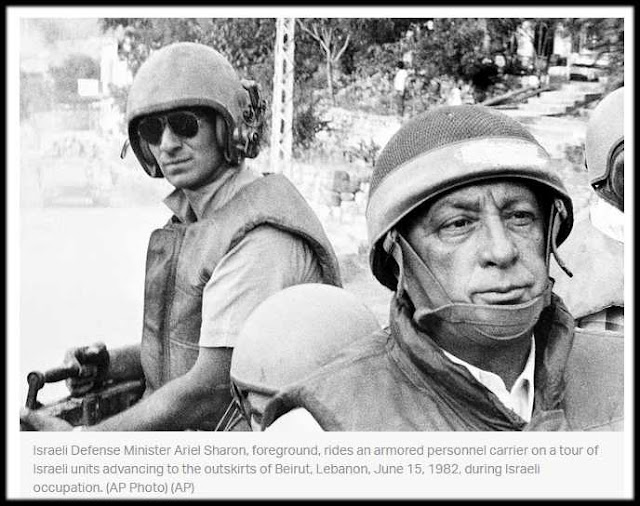
Ariel Sharon, Defence Minister and mass murderer who was personally responsible for the massacre at Sabra and Shatilla. He was also best friend of Shimon Peres, leader of the Israeli Labour Party
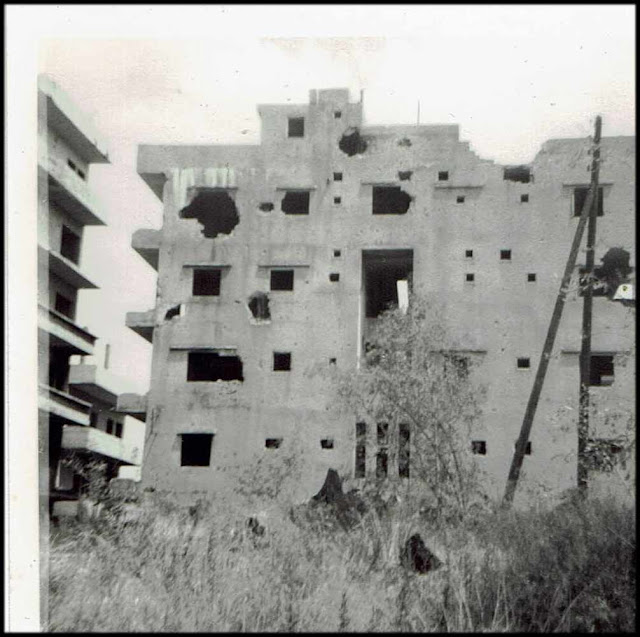
The remains of Tel al-Zataar refugee camp which was destroyed, along with its inhabitants in 1982 after the Phalange besieged it, with the support of Syrias Baathist government
A member of our delegation and myself decided to visit what remained of the refugee camp Tel al-Zatar in East Beirut. It had been subject to a 3 month siege from June till August when it fell to the fascist forces aided by Syria. Up to 50,000 lived in the refugee camp and an estimated 4,000 Palestinians were massacred by Syria’s ‘Christian’ allies. To this day thousands of the dead remain unaccounted for.
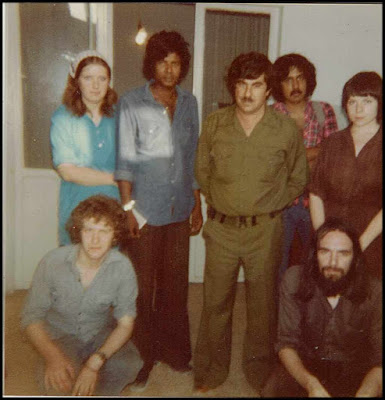
Our delegation to the PLO in 1979
In order to see what remained of the camp it was necessary to cross the border, a veritable no-man’s land with the Lebanese Army dug in, between West and East Beirut and we had to get 2 taxis as no taxi would cross into hostile territory. On our way back we were detained by the Lebanese army because we had no visas in our passports.
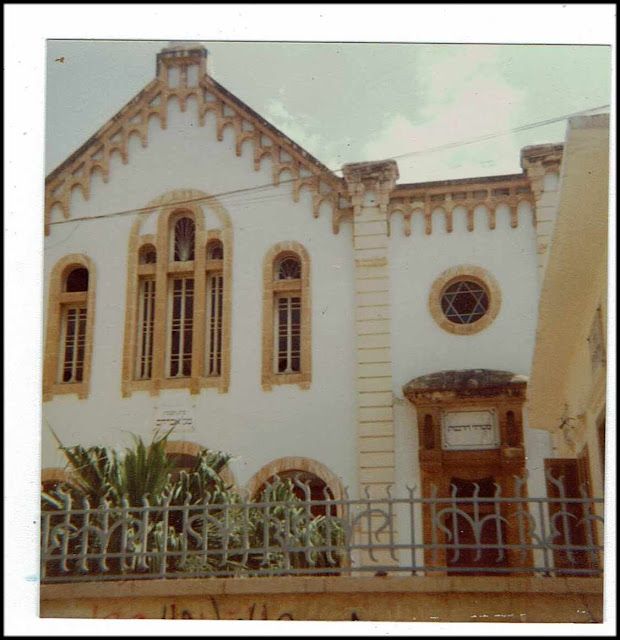
Beirut synagogue at Wadi Abu Jamil which I visited in 1979 – during Lebanon’s civil war it came under siege from Israel’s Phalangist friends – it was relieved by troops of the PFLP
We explained to them that we had come to Lebanon at the invitation of the Syrian occupying power, which was technically true! After about an hour or so we were released since the Lebanese army was de facto under the control of the Syrian military.
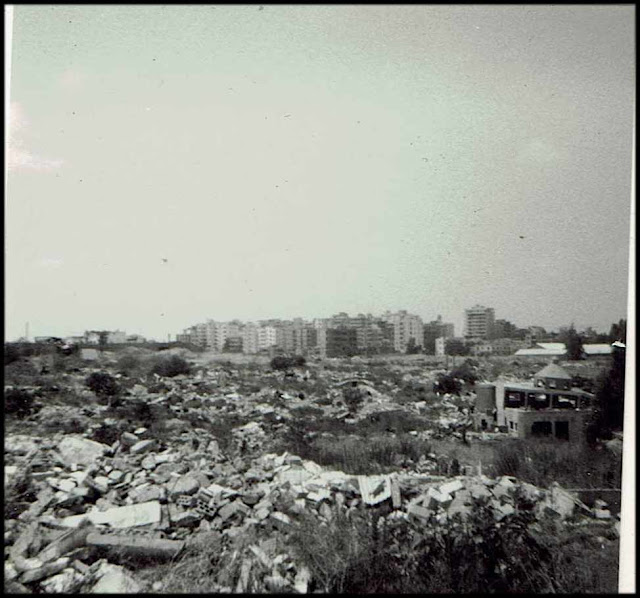
The remains of Tel al-Zataar refugee camp which was destroyed, along with its inhabitants in 1982 after the Phalange besieged it, with the support of Syrias Baathist government
Whilst in Beirut we were given tours of the camps including sewing and woodwork workshops. There are a couple of photographs here. It is a sad and sobering thought that most of those we met would have been butchered just 3 years later because of the utter stupidity of the PLO and Arafat in leaving the camps undefended and taking the word of the Zionists and their American backers to protect the camps. It was criminal irresponsibility not to ensure that if they had to leave, that sufficient arms weren’t left behind to ensure that the camps would remain protected.
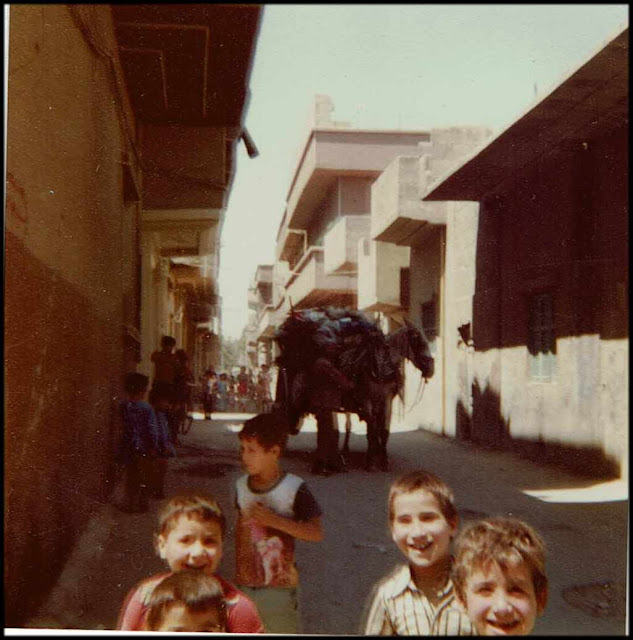
children playing in the streets and alleways of the refugee camps – 3 years after this photo was taken most if not all of them would have been slaughtered by Israel’s Phalangist allies
On 6th June Israel invaded Lebanon. The pretext was the attempted assassination of the Israeli Ambassador in London, Shlomo Argov. In fact the assassination attempt had nothing to do with the PLO and was the work of the Abu Nidal group, which had been expelled by the PLO and which was the creature of Iraq’s Ba’athist government. In any event it was a pretext and Argov himself later condemned the invasion.
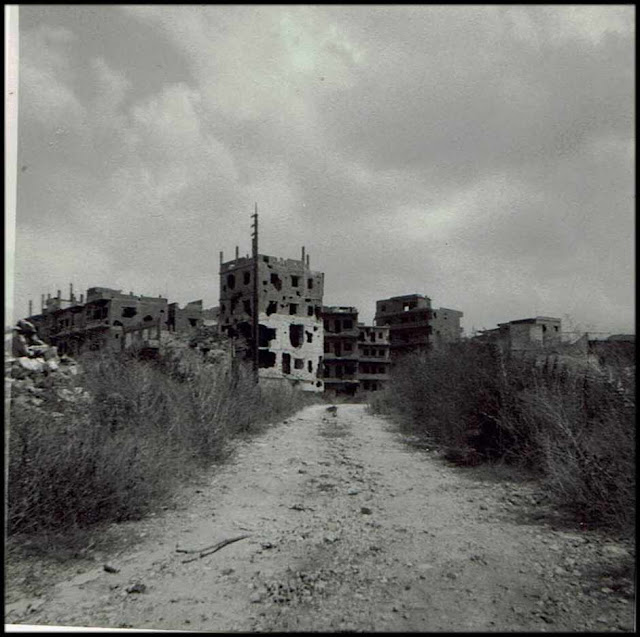
The remains of Tel al-Zataar refugee camp which was destroyed, along with its inhabitants in 1982 after the Phalange besieged it, with the support of Syrias Baathist government
Israel’s invasion of Lebanon began June 6, 1982. Following the assassination of the Lebanese President Bashir Gemayel on September 14th, whom Israel had imposed on Lebanon and who Syria is widely suspected to have assassinated in a car bomb, Israeli troops entered and occupied West Beirut, contrary to all its previous promises.
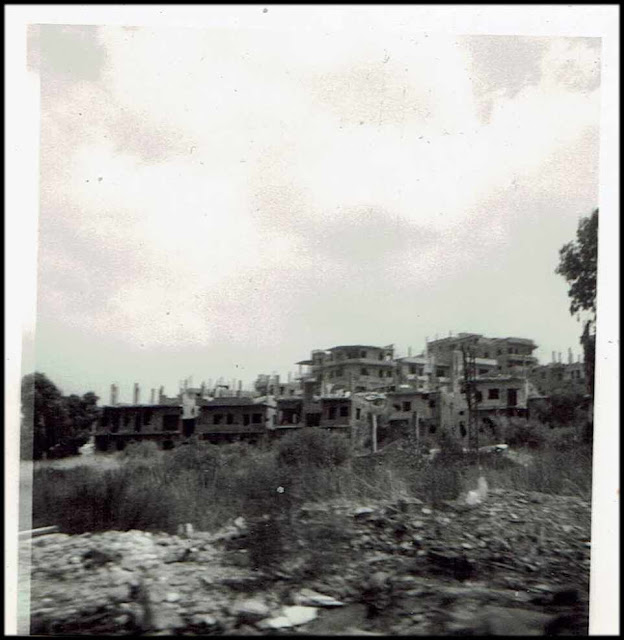
The remains of Tel al-Zataar refugee camp which was destroyed, along with its inhabitants in 1982 after the Phalange besieged it, with the support of Syrias Baathist government
A deal was reached between the PLO and Americans whereby the PLO troops left for Tunisia by ship and the US promised to defend and protect the Palestinian refugee camps. Once again the PLO believed American promises although of course their position by then was extremely weak.
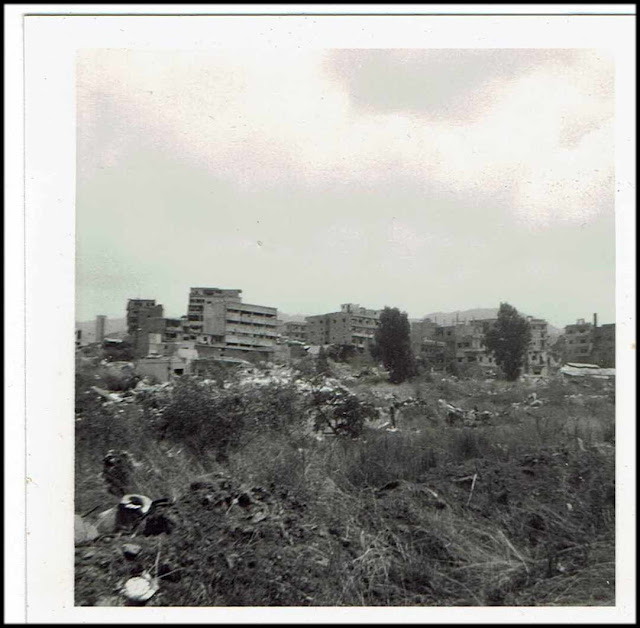
The remains of Tel al-Zataar refugee camp which was destroyed, along with its inhabitants in 1982 after the Phalange besieged it, with the support of Syrias Baathist government
On September 16, 1982, the Phalangists, fascists who were known to harbour a deep hatred for the Palestinians, entered the Sabra and Shatila refugee camps in West Beirut. The excuse for allowing the Phalange to enter the camps was that the PLO had left hundreds of ‘terrorists’ behind. The Phalange massacred an estimated 2,000 civilians.
The Israelis fired flares throughout the night to light up the killing fields – thus allowing the militiamen to find their way through the narrow alleys of the camps. The massacre went on for two days. When the massacre had Israel supplied the bulldozers to dig mass graves. Refugees who had escaped to the perimeter of the camp were turned back by the Zionist soldiers.
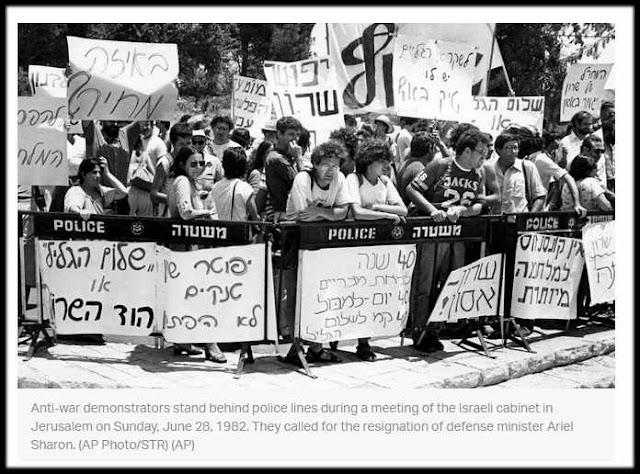
Israel in the form of its Prime Minister, Menachem Begin tried to excuse their behaviour by blaming it on the ‘Christians’ but it was like putting a rattlesnake in a baby’s cradle. It was inevitable that the Phalange would perpetrate a massacre.
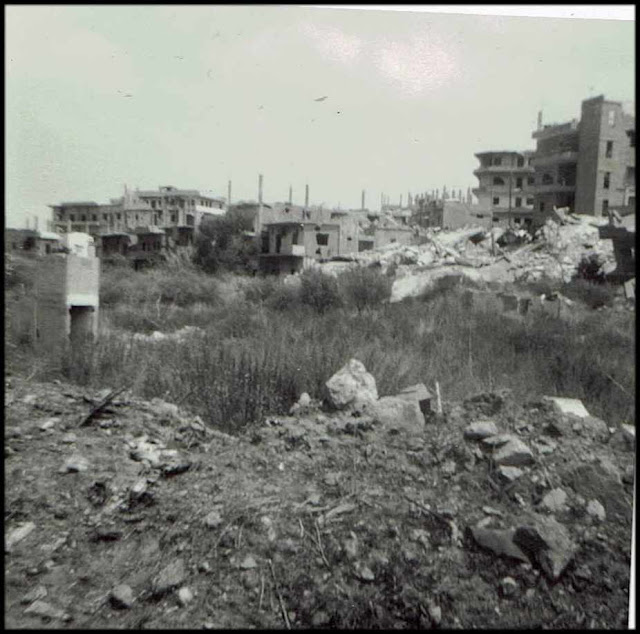
The remains of Tel al-Zataar refugee camp which was destroyed, along with its inhabitants in 1982 after the Phalange besieged it, with the support of Syrias Baathist government
Israeli troops surrounded the camps to prevent the refugees from escaping. In Israel a 300,000 demonstration was held to protest the massacre and the government set up the Kahane Commission. In 1983 Ariel Sharon, the Israeli Defense Minister, was held to bear “personal responsibility” for the slaughter. However this was a whitewash. The decision to invade Lebanon and then Beirut was a collective decision of the Israeli cabinet, not least its Prime Minister Menachem Begin.
Many people thought that Sharon’s career was over but I predicted, and unfortunately I was right, in an article in Tribune, that Sharon would sooner or later come back as Prime Minister. I was right and this most bloodthirsty of monsters came back in time to trigger of the Al Aqsa Intifada.
It is worth reminding ourselves that all the Israeli Zionist parties, from Likud to the ‘leftist’ Mapam and what became Meretz, supported the invasion of Lebanon. Only Israeli anti-Zionists were opposed from the start though, as the Lebanese resistance took its toll, more and more people began to oppose what happened.
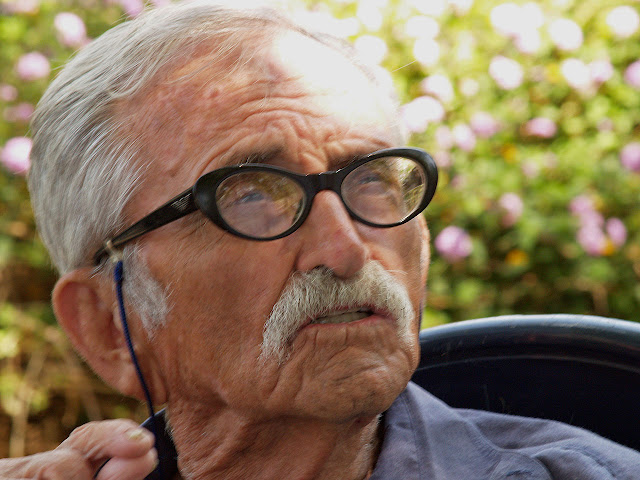
Dov Yermiyah, dissident Israeli Colonel who was dismissed for his criticisms of the Zionists’ barbarity
Perhaps the most famous opponent of the war was Dov Yermiya, a reserve Lieutenant Colonel who openly condemned Israel’s bombing of Ain al Hilweh refugee camp. He said it reminded him of World War II. Because of his open criticisms of the war he was dismissed and he later wrote a War Diary of describing what he had seen. Dov died aged 101 and shortly before his death he announced that he had rejected Zionism. He said of Israel that ‘we have become a nation of savage thugs.’For further information see Sabra and Shatila: New Revelations on America’s complicity in what happened.Below is a personal testimony as to what happened by Dr Alfout Mahmoud.
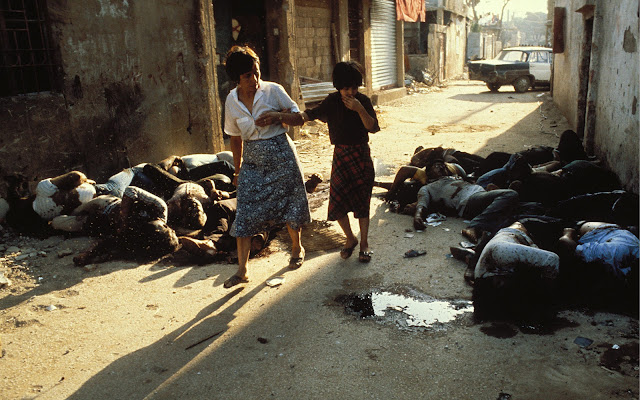
Two Palestinian women walk past the dead bodies
Continuous Terror
by Dr. Olfat Mahmoud
It was 10 am on Wednesday, September 16, 1982 and I was on duty at Accra Hospital, one of the Palestinian hospitals for Palestinian refugees in Beirut, Lebanon. The Israeli occupation of Lebanon was ongoing and the camps were surrounded by Israeli troops. Throughout the night we had heard stories of terrible things happening in Sabra and Shatila camp just adjacent to us but did not believe them.
“Suddenly we were interrupted by the sound of intense gunfire at the hospital entrance. The foreign nurses urged us all to leave immediately as they were not in danger and could care for the patients. The Lebanese militia were attacking from the position the Israelis had just vacated. Several other nurses and I were on the ground floor. We ran to a window at the back of the hospital, with seconds to spare we clambered out and ran into the garden of a villa behind the hospital. The front gate of the villa was locked; the only way out was over the fence. Once over this, we ran for our lives towards the bridge and then scattered.
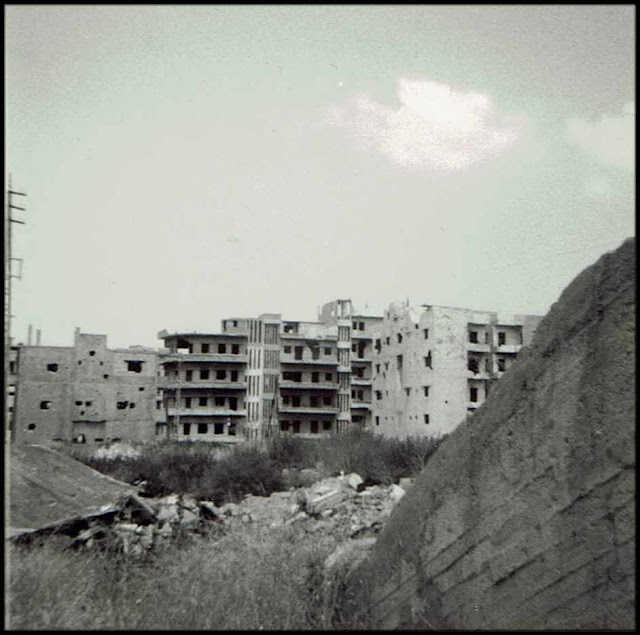
We heard that Lebanese militiamen had also killed nurses at Gaza Hospital located inside Sabra and Shatila camp. The foreign nurses and doctors there testified on the Saturday morning, as militiamen were marching them down the camp’s main street, they saw hundreds of mainly women and children under guard sitting by a large and recently dug pit. Soon after this, they heard repeated shooting for 10 minutes or more, accompanied by screams and cries.
For two days and nights after the massacre, I slept as if in a coma. I had nightmares filled with the people who’d been slaughtered, all the people I’d known and loved and who were no longer there. When I finally woke up, I found a black cloud of grief and despair had settled around me. Nothing could shift it. It was shot through with flashes of terror that at any moment soldiers would come crashing through the door to kill me and my family. I couldn’t bear to listen to the news, and I would cry easily. I just wanted to run away from everything, but my limbs felt too heavy to move. My body was like lead. And my throat was constricted constantly.” *
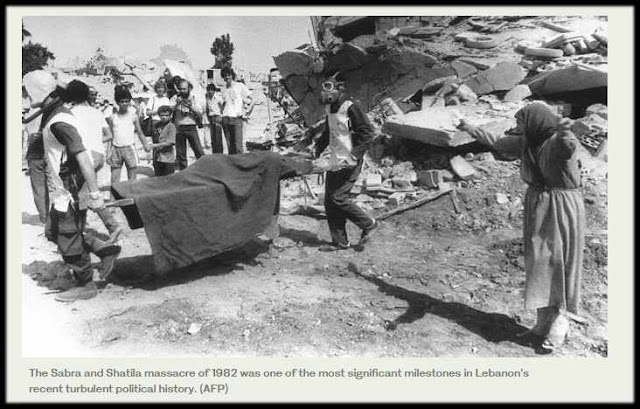
This is part of my memory of the massacre that took place in the Sabra and Shatila camp in Beirut, Lebanon 38 years ago. Over 2,000 women children and old men were massacred. I can never forget this and nor can all those who witnessed it and were survivors like me.
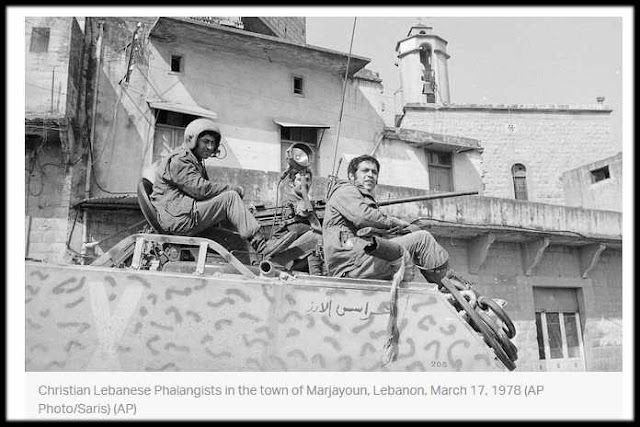
The tragedy of Sabra and Shatila was and still is a powerful reminder of the occupation of Palestinian land. It is a powerful reminder of the failure of international efforts to find a peaceful settlement to Israeli illegal occupation and to the Palestinian refugees’ endless cycle of displacement. This massacre is only one of the terrible massacres that have affected Palestinians but for me it was and is still an unforgettable traumatic event. Many survivors continue to live in Sabra and Shatila, struggling to make a living and haunted by their memories of the slaughter. To this day, justice has not been served for the war crimes that took place there despite efforts to take this massacre to the International War Crimes Tribunal. It serves as a powerful and tragic reminder of the vulnerability of Palestinians and Palestinian refugees.
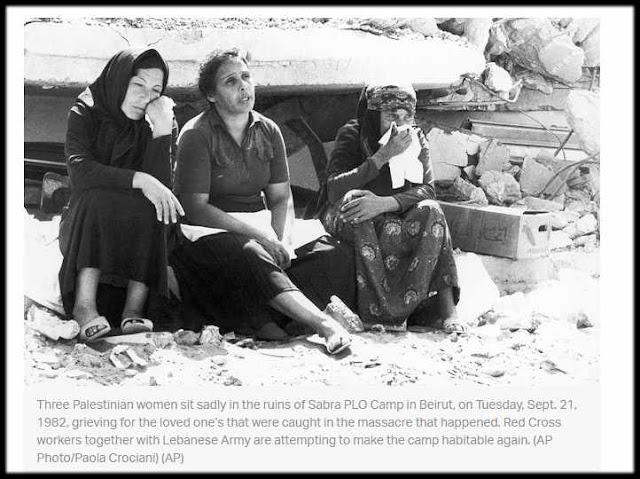
On August 4, 2020, the Beirut port suffered from a terrifying and devastating blast that killed over 200 people, made homeless around 300,000 and caused extensive damage to the city. I have been through wars and the massacre but as I heard the shattering of glass, and the movement of the house, I was truly terrified and initially thought that the house was collapsing around me. Just few weeks after that, a new fire erupted in the port. All what happened and is still happening, brought back the painful memories of Sabra and Shatila massacre.
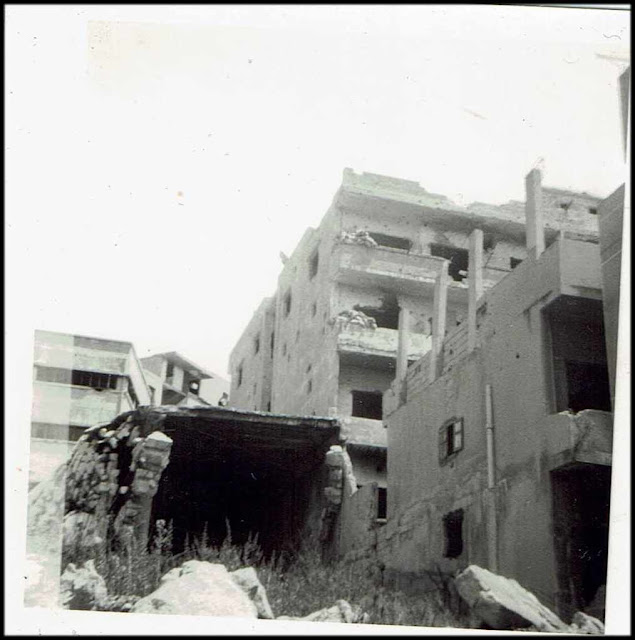
When Sabra and Shatila massacre happened and the killing and slaughter ended, its effects lived on. People were terrified and children would scream whenever they saw the army passing by. Now, after these recent tragic events in Beirut the consequences remain. The sound of breaking glass causes my heart and others to stop with fear. When the fire erupted in the port last week, we all started to open the windows and doors hoping to minimize damage from an expected blast. Many left their houses in terror. Even though we were still under the pressure of widespread cases of COVID-19 and the streets were crowded.
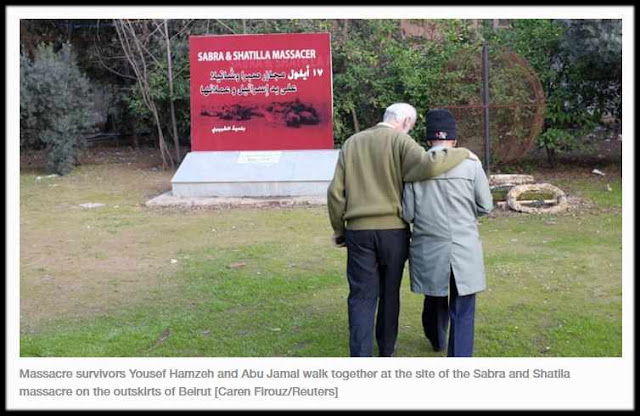
As years pass people in Lebanon, including us Palestinian refugees, continue to witness tragedies that bring back terrifying and tragic memories. I always ask myself, why are innocent people dying because of greed, negligence, corruption, brutality, and lack of humanity? In the face of this ongoing and overwhelming despair my solace comes through my humanitarian work to fight for justice and dignity for Palestinian refugees. I call on people everywhere to fight for justice in whatever way what they can. I have also found strength in prayer and my religious beliefs and so I pray daily for peace and justice for my people and for the other 80 million of refugees and displaced people in the world.
*This is an excerpt from Tears for Tarshiha by Olfat Mahmoud
